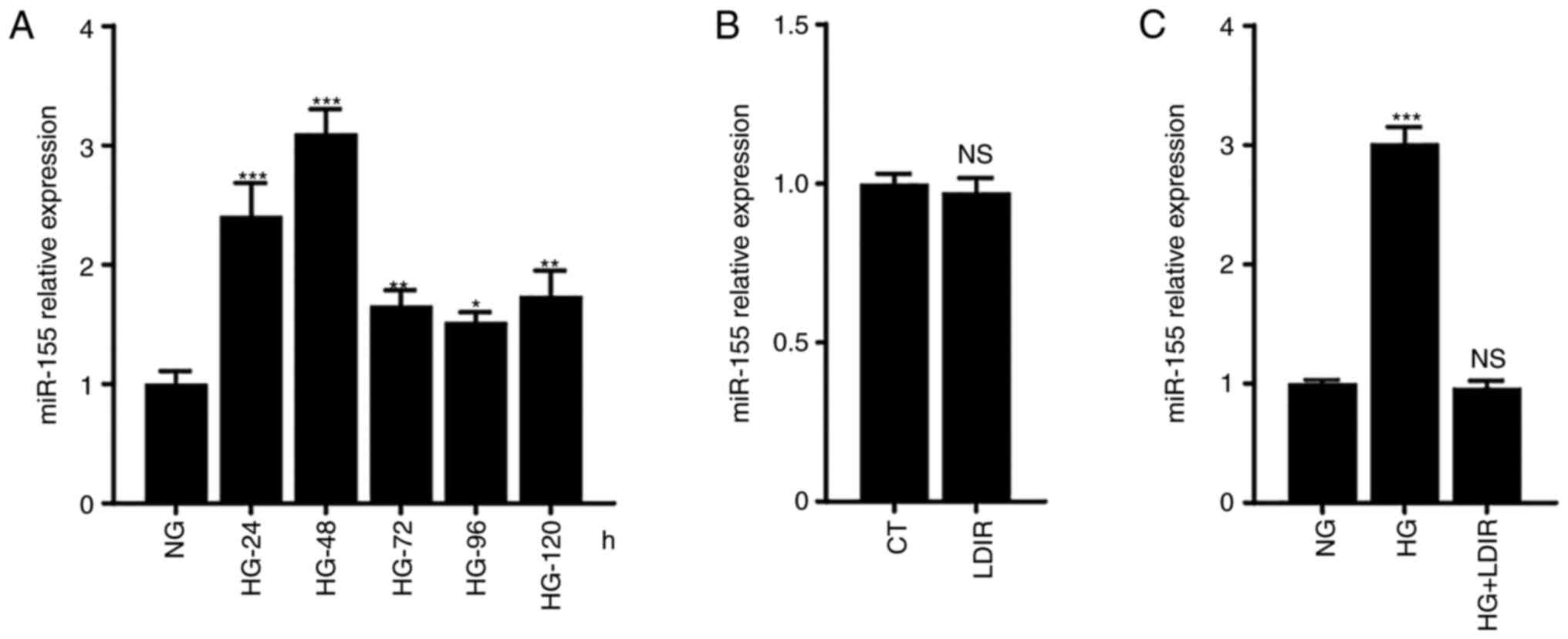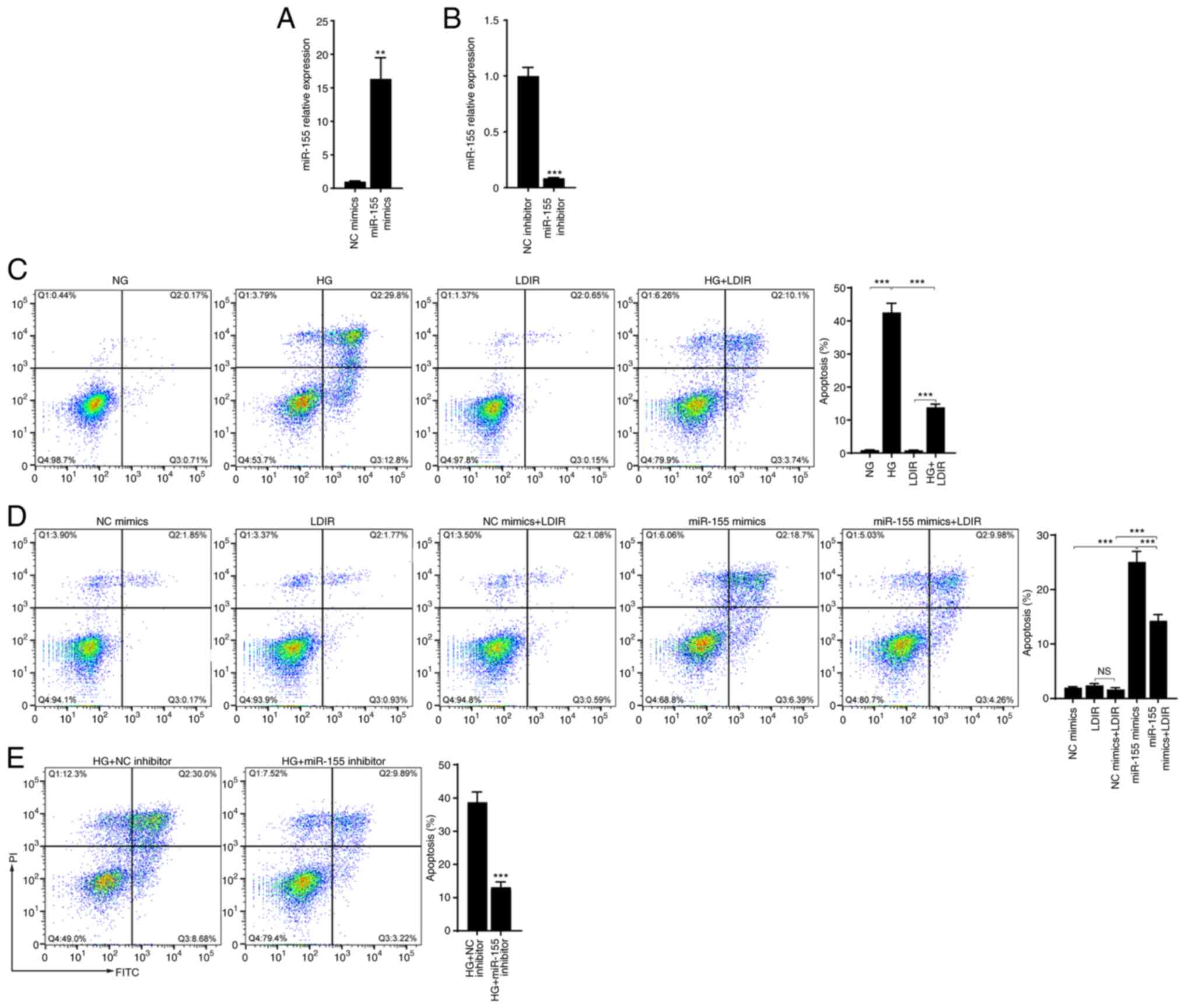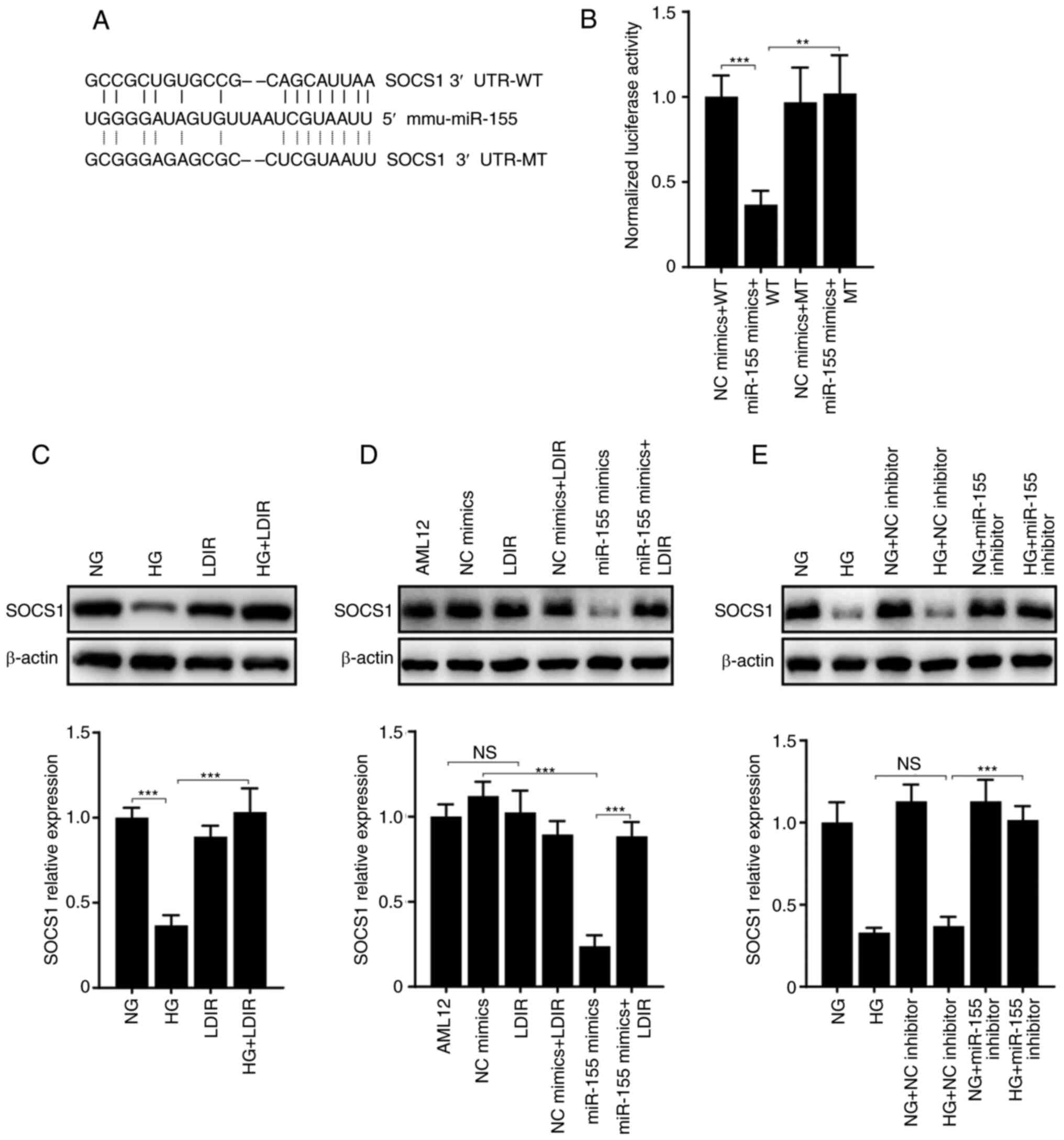|
1
|
Wang J, Wu W, Dong G, Huang K and Fu J:
Pediatric diabetes in China: Challenges and actions. Pediatr
Diabetes. 23:545–550. 2022. View Article : Google Scholar : PubMed/NCBI
|
|
2
|
Bedi O, Aggarwal S, Trehanpati N,
Ramakrishna G and Krishan P: Molecular and pathological events
involved in the pathogenesis of diabetes-associated nonalcoholic
fatty liver disease. J Clin Exp Hepatol. 9:607–618. 2019.
View Article : Google Scholar : PubMed/NCBI
|
|
3
|
Assuncao SNF, Sorte NCB, Alves CD, Mendes
PSA, Alves CRB and Silva LR: Nonalcoholic fatty liver disease
(NAFLD) pathophysiology in obese children and adolescents: Update.
Nutr Hosp. 34:727–730. 2017. View
Article : Google Scholar : PubMed/NCBI
|
|
4
|
Farhood B, Goradel NH, Mortezaee K,
Khanlarkhani N, Najafi M and Sahebkar A: Melatonin and cancer: From
the promotion of genomic stability to use in cancer treatment. J
Cell Physiol. 234:5613–5627. 2019. View Article : Google Scholar : PubMed/NCBI
|
|
5
|
Mettler FA, Sinclair WK, Anspaugh L,
Edington C, Harley JH, Ricks RC, Selby PB, Webster EW and Wyckoff
HO: The 1986 and 1988 UNSCEAR (United Nations Scientific Committee
on the Effects of Atomic Radiation) reports: Findings and
implications. Health Phys. 58:241–250. 1990. View Article : Google Scholar : PubMed/NCBI
|
|
6
|
Luckey TD: Physiological benefits from low
levels of ionizing radiation. Health Phys. 43:771–789. 1982.
View Article : Google Scholar : PubMed/NCBI
|
|
7
|
Feinendegen LE: Evidence for beneficial
low level radiation effects and radiation hormesis. Br J Radiol.
78:3–7. 2005. View Article : Google Scholar : PubMed/NCBI
|
|
8
|
Olivieri G, Bodycote J and Wolff S:
Adaptive response of human lymphocytes to low concentrations of
radioactive thymidine. Science. 223:594–597. 1984. View Article : Google Scholar : PubMed/NCBI
|
|
9
|
Averbeck D, Salomaa S, Bouffler S,
Ottolenghi A, Smyth V and Sabatier L: Progress in low dose health
risk research: Novel effects and new concepts in low dose
radiobiology. Mutat Res Rev Mutat Res. 776:46–69. 2018. View Article : Google Scholar : PubMed/NCBI
|
|
10
|
Jiang H, Xu Y, Li W, Ma K, Cai L and Wang
G: Low-dose radiation does not induce proliferation in tumor cells
in vitro and in vivo. Radiat Res. 170:477–487. 2008. View Article : Google Scholar : PubMed/NCBI
|
|
11
|
Bedewy AML, Elmaghraby SM, Shehata AA and
Kandil NS: Prognostic value of miRNA-155 expression in B-cell
Non-Hodgkin Lymphoma. Turk J Haematol. 34:207–212. 2017.PubMed/NCBI
|
|
12
|
Bayraktar R and Van Roosbroeck K: miR-155
in cancer drug resistance and as target for miRNA-based
therapeutics. Cancer Metastasis Rev. 37:33–44. 2018. View Article : Google Scholar : PubMed/NCBI
|
|
13
|
Mashima R: Physiological roles of miR-155.
Immunology. 145:323–333. 2015. View Article : Google Scholar : PubMed/NCBI
|
|
14
|
Bala S, Csak T, Saha B, Zatsiorsky J,
Kodys K, Catalano D, Satishchandran A and Szabo G: The
pro-inflammatory effects of miR-155 promote liver fibrosis and
alcohol-induced steatohepatitis. J Hepatol. 64:1378–1387. 2016.
View Article : Google Scholar : PubMed/NCBI
|
|
15
|
Chen L, Ming X, Li W, Bi M, Yan B, Wang X,
Yang P and Yang B: The microRNA-155 mediates hepatitis B virus
replication by reinforcing SOCS1 signalling-induced autophagy. Cell
Biochem Funct. 38:436–442. 2020. View
Article : Google Scholar : PubMed/NCBI
|
|
16
|
Babuta M, Furi I, Bala S, Bukong TN, Lowe
P, Catalano D, Calenda C, Kodys K and Szabo G: Dysregulated
autophagy and lysosome function are linked to exosome production by
Micro-RNA 155 in alcoholic liver disease. Hepatology. 70:2123–2141.
2019. View Article : Google Scholar : PubMed/NCBI
|
|
17
|
Wang J and Che J: CircTP63 promotes
hepatocellular carcinoma progression by sponging miR-155-5p and
upregulating ZBTB18. Cancer Cell Int. 21:1562021. View Article : Google Scholar : PubMed/NCBI
|
|
18
|
Jankauskas SS, Gambardella J, Sardu C,
Lombardi A and Santulli G: Functional role of miR-155 in the
pathogenesis of diabetes mellitus and its complications. Noncoding
RNA. 7:392021.PubMed/NCBI
|
|
19
|
El Samaloty NM, Hassan ZA, Hefny ZM and
Abdelaziz DHA: Circulating microRNA-155 is associated with insulin
resistance in chronic hepatitis C patients. Arab J Gastroenterol.
20:1–7. 2019. View Article : Google Scholar : PubMed/NCBI
|
|
20
|
Bai X, Luo Q, Tan K and Guo L: Diagnostic
value of VDBP and miR-155-5p in diabetic nephropathy and the
correlation with urinary microalbumin. Exp Ther Med. 20:862020.
View Article : Google Scholar : PubMed/NCBI
|
|
21
|
Takehara Y, Yamaoka K, Hiraki Y, Yoshioka
T and Utsumi K: Protection against alloxan diabetes by low-dose
60Co gamma irradiation before alloxan administration. Physiol Chem
Phys Med NMR. 27:149–159. 1995.PubMed/NCBI
|
|
22
|
Zhang C, Tan Y, Guo W, Li C, Ji S, Li X
and Cai L: Attenuation of diabetes-induced renal dysfunction by
multiple exposures to low-dose radiation is associated with the
suppression of systemic and renal inflammation. Am J Physiol
Endocrinol Metab. 297:E1366–E1377. 2009. View Article : Google Scholar : PubMed/NCBI
|
|
23
|
Zhao Y, Kong C, Chen X, Wang Z, Wan Z, Jia
L, Liu Q, Wang Y, Li W, Cui J, et al: Repetitive exposure to
low-dose X-irradiation attenuates testicular apoptosis in type 2
diabetic rats, likely via Akt-mediated Nrf2 activation. Mol Cell
Endocrinol. 422:203–210. 2016. View Article : Google Scholar : PubMed/NCBI
|
|
24
|
Zhang Y, Li Y, Zhao J, Wang C, Deng B,
Zhang Q and Shi C: Protective effects and mechanisms of
Polyethylene Glycol Loxenatide Against Hyperglycemia and liver
injury in db/db diabetic mice. Front Pharmacol. 12:7818562021.
View Article : Google Scholar : PubMed/NCBI
|
|
25
|
Lizotte F, Denhez B, Guay A, Gevry N, Cote
AM and Geraldes P: Persistent insulin resistance in podocytes
caused by epigenetic changes of SHP-1 in diabetes. Diabetes.
65:3705–3717. 2016. View Article : Google Scholar : PubMed/NCBI
|
|
26
|
Shen L, Evel-Kabler K, Strube R and Chen
SY: Silencing of SOCS1 enhances antigen presentation by dendritic
cells and antigen-specific anti-tumor immunity. Nat Biotechnol.
22:1546–1553. 2004. View
Article : Google Scholar : PubMed/NCBI
|
|
27
|
Shi D, Li D, Yin Q, Qiu Y, Yan H, Shen Y,
Lu G and Liu W: Silenced suppressor of cytokine signaling 1 (SOCS1)
enhances the maturation and antifungal immunity of dendritic cells
in response to Candida albicans in vitro. Immunol Res. 61:206–218.
2015. View Article : Google Scholar : PubMed/NCBI
|
|
28
|
Livak KJ and Schmittgen TD: Analysis of
relative gene expression data using real-time quantitative PCR and
the 2(−Delta Delta C(T)) method. Methods. 25:402–408. 2001.
View Article : Google Scholar : PubMed/NCBI
|
|
29
|
Polina ER, Oliveira FM, Sbruzzi RC,
Crispim D, Canani LH and Santos KG: Gene polymorphism and plasma
levels of miR-155 in diabetic retinopathy. Endocr Connect.
8:1591–1599. 2019. View Article : Google Scholar : PubMed/NCBI
|
|
30
|
Garcia-Diaz DF, Pizarro C, Camacho-Guillen
P, Codner E, Soto N and Perez-Bravo F: Expression of miR-155,
miR-146a, and miR-326 in T1D patients from Chile: Relationship with
autoimmunity and inflammatory markers. Arch Endocrinol Metab.
62:34–40. 2018. View Article : Google Scholar : PubMed/NCBI
|
|
31
|
Mostahfezian M, Azhir Z, Dehghanian F and
Hojati Z: Expression pattern of microRNAs, miR-21, miR-155 and
miR-338 in patients with type 1 diabetes. Arch Med Res. 50:79–85.
2019. View Article : Google Scholar : PubMed/NCBI
|
|
32
|
Chen X, Wang J, Lin Y, Liu Y and Zhou T:
Signaling pathways of podocyte injury in diabetic kidney disease
and the effect of sodium-glucose cotransporter 2 inhibitors. Cells.
11:39132022. View Article : Google Scholar : PubMed/NCBI
|
|
33
|
Ouyang C, You J and Xie Z: The interplay
between autophagy and apoptosis in the diabetic heart. J Mol Cell
Cardiol. 71:71–80. 2014. View Article : Google Scholar : PubMed/NCBI
|
|
34
|
Liu YP, Shao SJ and Guo HD: Schwann cells
apoptosis is induced by high glucose in diabetic peripheral
neuropathy. Life Sci. 248:1174592020. View Article : Google Scholar : PubMed/NCBI
|
|
35
|
Schattenberg JM and Schuchmann M: Diabetes
and apoptosis: Liver. Apoptosis. 14:1459–1471. 2009. View Article : Google Scholar : PubMed/NCBI
|
|
36
|
Lin X, Chen L, Li H, Liu Y, Guan Y, Li X,
Jia Z, Lin X, Jia J, Sun Y and Xiao D: miR-155 accelerates
proliferation of mouse hepatocytes during liver regeneration by
directly targeting SOCS1. Am J Physiol Gastrointest Liver Physiol.
315:G443–G453. 2018. View Article : Google Scholar : PubMed/NCBI
|
|
37
|
Zhou X, Wang L, Zhang Z, Liu J, Qu Q, Zu Y
and Shi D: Fluorometholone inhibits high glucose-induced cellular
senescence in human retinal endothelial cells. Hum Exp Toxicol.
41:96032712210761072022. View Article : Google Scholar : PubMed/NCBI
|
|
38
|
Li B, Li H, Dai L, Liu C, Wang L, Li Q and
Gu C: NIK-SIX1 signalling axis regulates high glucose-induced
endothelial cell dysfunction and inflammation. Autoimmunity.
55:86–94. 2022. View Article : Google Scholar : PubMed/NCBI
|
|
39
|
He Y, Zhang W, Zhang R, Zhang H and Min W:
SOCS1 inhibits tumor necrosis factor-induced activation of ASK1-JNK
inflammatory signaling by mediating ASK1 degradation. J Biol Chem.
281:5559–5566. 2006. View Article : Google Scholar : PubMed/NCBI
|
|
40
|
Wu XY, Yu J and Tian HM: Effect of SOCS1
on diabetic renal injury through regulating TLR signaling pathway.
Eur Rev Med Pharmacol Sci. 23:8068–8074. 2019.PubMed/NCBI
|
|
41
|
Lee YH, Cho Y, Lee BW, Park CY, Lee DH,
Cha BS and Rhee EJ: Nonalcoholic fatty liver disease in diabetes.
Part I: Epidemiology and diagnosis. Diabetes Metab J. 43:31–45.
2019. View Article : Google Scholar : PubMed/NCBI
|
|
42
|
Cusi K, Sanyal AJ, Zhang S, Hartman ML,
Bue-Valleskey JM, Hoogwerf BJ and Haupt A: Non-alcoholic fatty
liver disease (NAFLD) prevalence and its metabolic associations in
patients with type 1 diabetes and type 2 diabetes. Diabetes Obes
Metab. 19:1630–1634. 2017. View Article : Google Scholar : PubMed/NCBI
|
|
43
|
Voukali M, Kastrinelli I, Stragalinou S,
Tasiopoulou D, Paraskevopoulou P, Katsilambros N, Kokkinos A,
Tentolouris N and Ioannidis I: Study of postprandial lipaemia in
type 2 diabetes mellitus: Exenatide versus liraglutide. J Diabetes
Res. 2014:3040322014. View Article : Google Scholar : PubMed/NCBI
|
|
44
|
Sun F, Wu S, Wang J, Guo S, Chai S, Yang
Z, Li L, Zhang Y, Ji L and Zhan S: Effect of glucagon-like
peptide-1 receptor agonists on lipid profiles among type 2
diabetes: A systematic review and network meta-analysis. Clin Ther.
37:225–241. e2282015. View Article : Google Scholar : PubMed/NCBI
|
|
45
|
Roca-Rodriguez MM, Muros de Fuentes MT,
Piedrola-Maroto G, Quesada-Charneco M, Maraver-Selfa S, Tinahones
FJ and Mancha-Doblas I: Lixisenatide in patients with type 2
diabetes and obesity: Beyond glycaemic control. Aten Primaria.
49:294–299. 2017.(In Spanish). PubMed/NCBI
|
|
46
|
Zhang C, Xing X, Zhang F, Shao M, Jin S,
Yang H, Wang G, Cui J, Cai L, Li W and Lu X: Low-dose radiation
induces renal SOD1 expression and activity in type 1 diabetic mice.
Int J Radiat Biol. 90:224–230. 2014. View Article : Google Scholar : PubMed/NCBI
|
|
47
|
Shibamoto Y and Nakamura H: Overview of
biological, epidemiological, and clinical evidence of radiation
hormesis. Int J Mol Sci. 19:23872018. View Article : Google Scholar : PubMed/NCBI
|
|
48
|
Scott BR: Radiation-hormesis phenotypes,
the related mechanisms and implications for disease prevention and
therapy. J Cell Commun Signal. 8:341–352. 2014. View Article : Google Scholar : PubMed/NCBI
|
|
49
|
Lopez-Martinez G and Hahn DA: Early life
hormetic treatments decrease irradiation-induced oxidative damage,
increase longevity, and enhance sexual performance during old age
in the Caribbean fruit fly. PLoS One. 9:e881282014. View Article : Google Scholar : PubMed/NCBI
|
|
50
|
Cheda A, Wrembel-Wargocka J, Lisiak E,
Nowosielska EM, Marciniak M and Janiak MK: Single low doses of X
rays inhibit the development of experimental tumor metastases and
trigger the activities of NK cells in mice. Radiat Res.
161:335–340. 2004. View
Article : Google Scholar : PubMed/NCBI
|
|
51
|
Doss M: Evidence supporting radiation
hormesis in atomic bomb survivor cancer mortality data. Dose
Response. 10:584–592. 2012. View Article : Google Scholar : PubMed/NCBI
|
|
52
|
Cuttler JM, Moore ER, Hosfeld VD and
Nadolski DL: Update on a patient with Alzheimer disease treated
with CT scans. Dose Response. 15:15593258176931672017. View Article : Google Scholar : PubMed/NCBI
|
|
53
|
Kojima S, Cuttler JM, Shimura N, Koga H,
Murata A and Kawashima A: Radon therapy for autoimmune diseases
pemphigus and diabetes: 2 case reports. Dose Response.
17:15593258198509842019. View Article : Google Scholar : PubMed/NCBI
|
|
54
|
Dhawan G, Kapoor R, Dhawan R, Singh R,
Monga B, Giordano J and Calabrese EJ: Low dose radiation therapy as
a potential life saving treatment for COVID-19-induced acute
respiratory distress syndrome (ARDS). Radiother Oncol. 147:212–216.
2020. View Article : Google Scholar : PubMed/NCBI
|
|
55
|
Qu YL, Wang HF, Sun ZQ, Tang Y, Han XN, Yu
XB and Liu K: Up-regulated miR-155-5p promotes cell proliferation,
invasion and metastasis in colorectal carcinoma. Int J Clin Exp
Pathol. 8:6988–6994. 2015.PubMed/NCBI
|
|
56
|
Bhattacharya S, Chalk AM, Ng AJ, Martin
TJ, Zannettino AC, Purton LE, Lu J, Baker EK and Walkley CR:
Increased miR-155-5p and reduced miR-148a-3p contribute to the
suppression of osteosarcoma cell death. Oncogene. 35:5282–5294.
2016. View Article : Google Scholar : PubMed/NCBI
|
|
57
|
McDonald SJ, Cranford TL, VanderVeen BN,
Cardaci TD, Velázquez KT, Enos RT, Chatzistamou I, Fan D and Murphy
EA: miR155 deficiency reduces breast tumor burden in the MMTV-PyMT
mouse model. Physiol Genomics. 54:433–442. 2022. View Article : Google Scholar : PubMed/NCBI
|
|
58
|
Su N, Li L, Zhou E, Li H, Wu S and Cao Z:
Resveratrol downregulates miR-155-5p to block the malignant
behavior of gastric cancer cells. Biomed Res Int. 2022:69686412022.
View Article : Google Scholar : PubMed/NCBI
|
|
59
|
Li S, Zhang T, Zhou X, Du Z, Chen F, Luo J
and Liu Q: The tumor suppressor role of miR-155-5p in gastric
cancer. Oncol Lett. 16:2709–2714. 2018.PubMed/NCBI
|
|
60
|
Yao LY, Ma J, Zeng XM and Ou-Yang J:
MicroRNA-155-5p inhibits the invasion and migration of prostate
cancer cells by targeting SPOCK1. Oncol Lett. 20:3532020.
View Article : Google Scholar : PubMed/NCBI
|
|
61
|
Li Y, Guo L, Hou Z, Gong H, Yan M and
Zhang B: Role of MicroRNA-155 in Triptolide-induced hepatotoxicity
via the Nrf2-dependent pathway. J Ethnopharmacol. 281:1144892021.
View Article : Google Scholar : PubMed/NCBI
|
|
62
|
Xue X, Wang J, Fu K, Dai S, Wu R, Peng C
and Li Y: The role of miR-155 on liver diseases by modulating
immunity, inflammation and tumorigenesis. Int Immunopharmacol.
116:1097752023. View Article : Google Scholar : PubMed/NCBI
|
|
63
|
Sarkar N, Panigrahi R, Pal A, Biswas A,
Singh SP, Kar SK, Bandopadhyay M, Das D, Saha D, Kanda T, et al:
Expression of microRNA-155 correlates positively with the
expression of Toll-like receptor 7 and modulates hepatitis B virus
via C/EBP-β in hepatocytes. J Viral Hepat. 22:817–827. 2015.
View Article : Google Scholar : PubMed/NCBI
|
|
64
|
Bala S and Szabo G: MicroRNA signature in
alcoholic liver disease. Int J Hepatol. 2012:4982322012. View Article : Google Scholar : PubMed/NCBI
|
|
65
|
Dai W, Zhao J, Tang N, Zeng X, Wu K, Ye C,
Shi J, Lu C, Ning B, Zhang J and Lin Y: MicroRNA-155 attenuates
activation of hepatic stellate cell by simultaneously preventing
EMT process and ERK1 signalling pathway. Liver Int. 35:1234–1243.
2015. View Article : Google Scholar : PubMed/NCBI
|
|
66
|
Liang YB, Tang H, Chen ZB, Zeng LJ, Wu JG,
Yang W, Li ZY and Ma ZF: Downregulated SOCS1 expression activates
the JAK1/STAT1 pathway and promotes polarization of macrophages
into M1 type. Mol Med Rep. 16:6405–6411. 2017. View Article : Google Scholar : PubMed/NCBI
|
|
67
|
Tan L, Jiang W, Lu A, Cai H and Kong L:
miR-155 aggravates liver Ischemia/reperfusion injury by suppressing
SOCS1 in mice. Transplant Proc. 50:3831–3839. 2018. View Article : Google Scholar : PubMed/NCBI
|
|
68
|
Ren Y, Cui Y, Xiong X, Wang C and Zhang Y:
Inhibition of microRNA-155 alleviates lipopolysaccharide-induced
kidney injury in mice. Int J Clin Exp Pathol. 10:9362–9371.
2017.PubMed/NCBI
|
|
69
|
Lin X, Qin Y, Jia J, Lin T, Lin X, Chen L,
Zeng H, Han Y, Wu L, Huang S, et al: MiR-155 enhances insulin
sensitivity by coordinated regulation of multiple genes in mice.
PLoS Genet. 12:e10063082016. View Article : Google Scholar : PubMed/NCBI
|



















